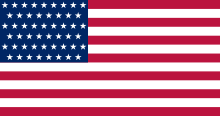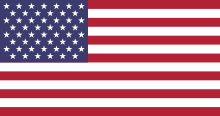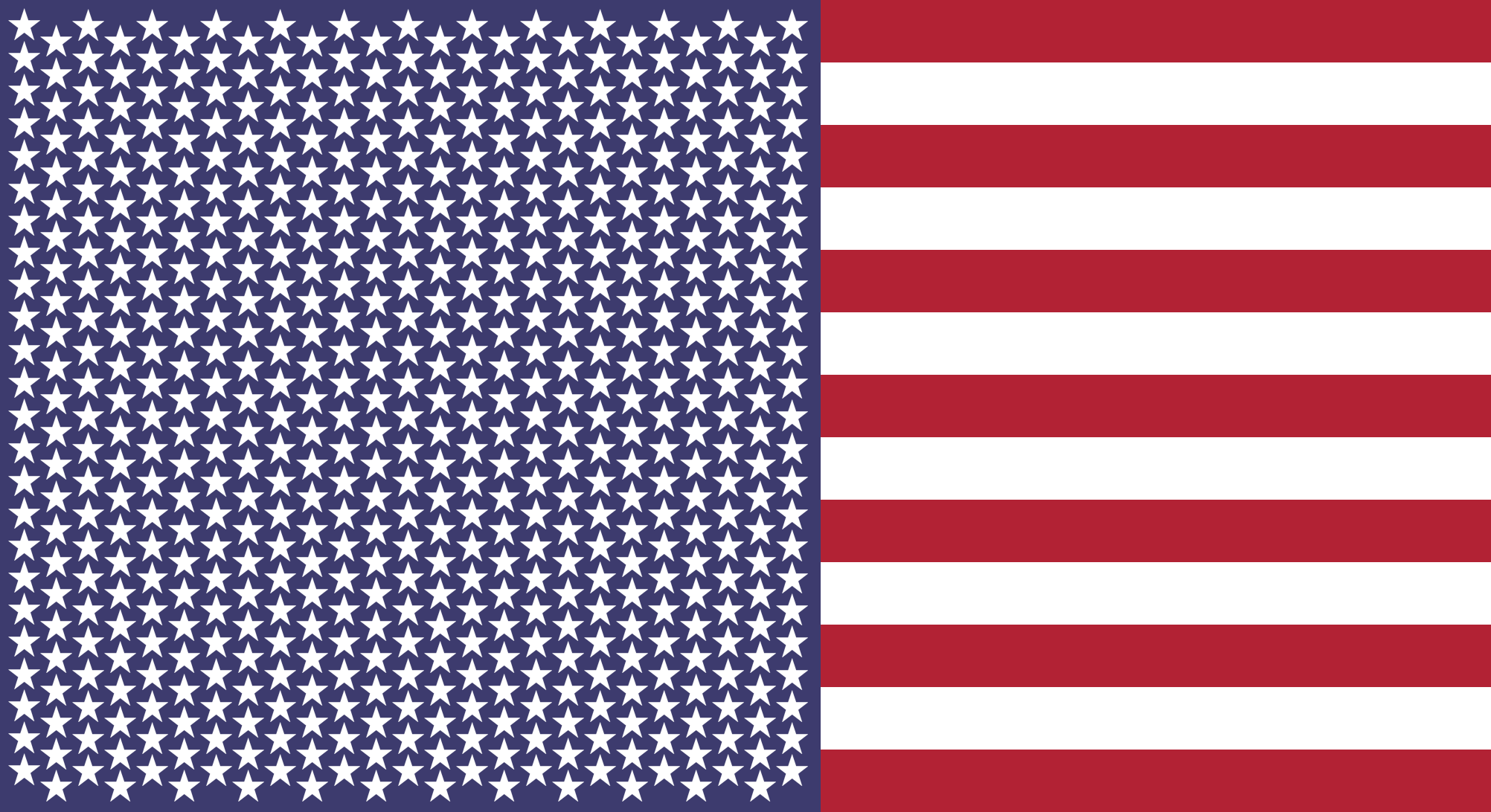

Let's start with what most people believe. Most people outside of the United States, and even some inside of the United States compare Germany to the United States , or France to the United States But is this a fair comparison? Is the United States a country in the same sense as Germany or France?
A State is a sovereign entity. It is a country. It is a nation. It is a people.
From the Merriam-Webster Dictionary:
- State
- a politically organized body of people usually occupying a definite territory especially one that is sovereign
Just as other States around the world has a Constitution, each State of the Union has a Constitution. States need to have a Constitution to be admitted to the Union. During drafting, the State seeking admittance must draft a Constitution that shall not conflict with the Federal Constitution. The States that are United currently composes of 50 States in total.
"New States may be admitted by the Congress into this Union; but no new State shall be formed or erected within the Jurisdiction of any other State; nor any State be formed by the Junction of two or more States, or Parts of States, without the Consent of the Legislatures of the States concerned as well as of the Congress."
People from England and throughout Europe settled on the continent of North America, what is known today as the Contiguous United States.
America merely refers to a geographical location. But the Federal Constitution transcends geography.
Hawaii, an Island in the Pacific Ocean, ~3,976km (~2,471mi) away from its closest State, California; Hawaii is not in "America" but it is still a State of the Union.
On August 21, 1959 , Hawaii joined the Union when the People of Hawaii drafted a Constitution of their own and were admitted by Congress.
| Name | Abbreviation | Date admitted to the Union | |
|---|---|---|---|
|
|
Alabama | AL | December 14, 1819 |
|
|
Alaska | AK | January 3, 1959 |
|
|
Arizona | AZ | February 14, 1912 |
|
|
Arkansas | AR | June 15, 1836 |
|
|
California | CA | September 9, 1850 |
|
|
Colorado | CO | August 1, 1876 |
|
|
Connecticut | CT | January 9, 1788 |
|
|
Delaware | DE | December 7, 1787 |
|
|
Florida | FL | March 3, 1845 |
|
|
Georgia | GA | January 2, 1788 |
|
|
Hawaii | HI | August 21, 1959 |
|
|
Idaho | ID | July 3, 1890 |
|
|
Iowa | IA | December 28, 1846 |
|
|
Illinois | IL | December 3, 1818 |
|
|
Indiana | IN | December 11, 1816 |
|
|
Kansas | KS | January 29, 1861 |
|
|
Kentucky | KY | June 1, 1792 |
|
|
Louisiana | LA | April 30, 1812 |
|
|
Maine | ME | March 15, 1820 |
|
|
Maryland | MD | April 28, 1788 |
|
|
Massachusetts | MA | February 6, 1788 |
|
|
Michigan | MI | January 26, 1837 |
|
|
Minnesota | MN | May 11, 1858 |
|
|
Mississippi | MS | December 10, 1817 |
|
|
Missouri | MO | August 10, 1821 |
|
|
Montana | MT | November 8, 1889 |
|
|
Nebraska | NE | March 1, 1867 |
|
|
Nevada | NV | October 31, 1864 |
|
|
New Hampshire | NH | June 21, 1788 |
|
|
New Jersey | NJ | December 18, 1787 |
|
|
New Mexico | NM | January 6, 1912 |
|
|
New York | NY | July 26, 1788 |
|
|
North Carolina | NC | November 21, 1789 |
|
|
North Dakota | ND | November 2, 1889 |
|
|
Ohio | OH | March 1, 1803 |
|
|
Oklahoma | OK | November 16, 1907 |
|
|
Oregon | OR | February 14, 1859 |
|
|
Pennsylvania | PA | December 12, 1787 |
|
|
Rhode Island | RI | May 29, 1790 |
|
|
South Carolina | SC | May 23, 1788 |
|
|
South Dakota | SD | November 2, 1889 |
|
|
Tennessee | TN | June 1, 1796 |
|
|
Texas | TX | December 29, 1845 |
|
|
Utah | UT | January 4, 1896 |
|
|
Vermont | VT | March 4, 1791 |
|
|
Virginia | VA | June 25, 1788 |
|
|
Washington | WA | November 11, 1889 |
|
|
West Virginia | WV | June 20, 1863 |
|
|
Wisconsin | WI | May 29, 1848 |
|
|
Wyoming | WY | July 10, 1890 |
The United States is a country comprised of many States. It is a federation of States. What are States? They are countries. They are sovereign. They are independent. They are United. But United how? By the Constitution of the United States of America.
Each State of the world has a flag that represents their State.
Delaware's State flag is

Turkmenistan's State flag is

Currently, there are 50 States in the Union.
When a State is admitted to the Union, a white Star is added to the United States' Flag.
![]()
Since there are
50
States, there are
50
![]() stars on the United States flag.
stars on the United States flag.

When the 51st State is admitted to the Union, the United States' Flag will have 51
![]() stars.
stars.

When the 52nd State is admitted to the Union, the United States' Flag will have 52
![]() stars.
stars.
 ... and so on.
... and so on.
As more States join the Union, the United States' Flag would have 195, 400, or even 600
![]() stars.
stars.


.svg.png)
.svg.png)
.svg.png)
.svg.png)
.svg.png)
.svg.png)
.svg.png)
.svg.png)
.svg.png)
.svg.png)
.svg.png)
.svg.png)
.svg.png)
.svg.png)
.svg.png)
.svg.png)
.svg.png)
.svg.png)
.svg.png)
.svg.png)
.svg.png)
.svg.png)
.svg.png)
.svg.png)
.svg.png)
.svg.png)
.svg.png)
.svg.png)
.svg.png)
.svg.png)
.svg.png)
If a State would like to join the Union, it must go through the following process:
"New States may be admitted by the Congress into this Union; but no new State shall be formed or erected within the Jurisdiction of any other State; nor any State be formed by the Junction of two or more States, or Parts of States, without the Consent of the Legislatures of the States concerned as well as of the Congress."
This is the process that all 50 States of the Union went through. This is the process that any State later, that would like to join the Union, must go through.
This includes (but is not limited to) the States of:
From the time of the Founding of the United States, language has very much changed.
When we as Humans of the world use the word "State", our minds usually default to a State of the Union. New York, California, Texas, etc.
But this limits our thinking. It limits our understanding of the scope of the Constitution of the United States.
It limits this understanding by programming our minds to think of the United States as a country, and not a federation of countries/States.
Intrinsic to the Constitution is the idea that the People of the State are the ones who draft the Constitution of the State. It must be the People of that State's will to join the Union. It is not within the scope or power of the Federal Government to force a State to join the Union.
Given that, for a State to be admitted, it must draft a Constitution that does not conflict with the Federal Constitution.
For State Constitutions that exist outside of the United States, it's very likely that there are existing conflicts that would need to be resolved.
Just as any other unadmitted State has a populace with a name, so too does the United States.
One important distinction however, is that all Statesmen and Stateswomen within the United States are also Citizens of the United States and does not necessarily reflect a "Race" as many other States do.
The People of the State of Missouri are Missourian. The People of the State of Germany are German. The People of the State of Michigan are Michigander. The People of the State of France are French. The People of the State of South Dakota are considered South Dakotan.
The People of the United States are United States Citizens. Or more simply, American.
The Magna Carta, Lex Rex, and principles of self-government significantly influenced the framers of the United States Constitution and the Declaration of Independence. Let's delve into each of these influences: